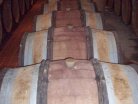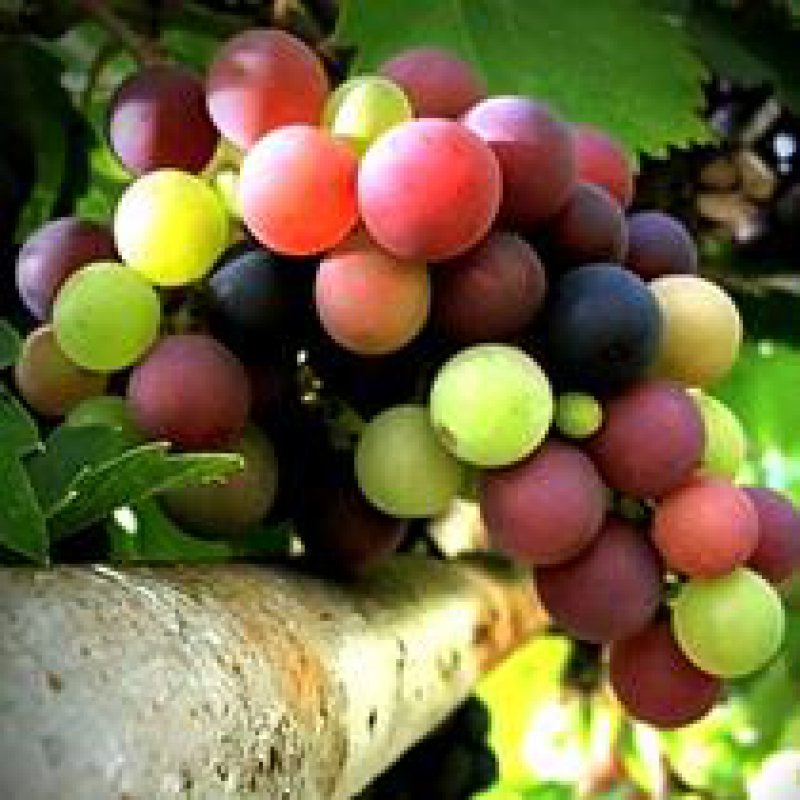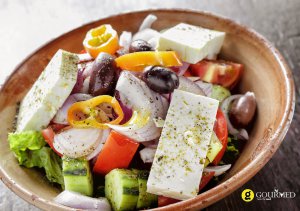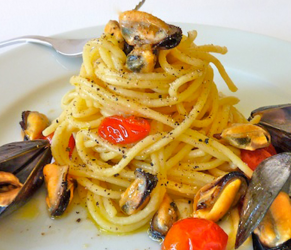Cargo ships carried clay amphoras filled with the precious liquid to ports and markets all over the Mediterranean. Yet, if we could try these wines today, we would probably find them undrinkable. They were mainy sweet, and contained flavourings and herbs such as thyme, mint, and even cinnamon. Seawater and pieces of pine bark were also added as preservatives, to keep the wine from turning sour.
The Byzantines added resin to some wines; a more refined remnant of this is the modern Retsina, a white wine mildly scented with pine resin. Retsina was widely consumed up until the mid 1970’s. But as the new generation of quality Greek wines gradually spread, its consumption declined sharply.
Today, many medium and small wineries, employing modern techniques and talented oenologists, experiment combining indigenous and imported grape varieties, producing wines of excellent quality.
The Greek vineyards are diverse, following the country’s morphology. Omnipresent hills and mountains divide the land into small regions, each with its own microclimate. Several indigenous grape varieties, many of which also existed in antiquity, thrive, acquiring different characteristics in each region.
According to EU regulations and the Greek law, the system of appelations of origin (AOC) matches the Greek varieties to the areas where the best of their kinds is traditionally produced. Note, however, that you will also find exceptional regional wines outside the AOC classification.
The most important wines and grape varieties of each region are:
MACEDONIA: the land of the Xinomavro* grape which produces the well-loved Greek brusco wine (robust red). Naoussa is the best example, while Amyndeon made from the same grape is light red and can also be a pleasant still or sparkling rose. Xinomavro combined with the Negoska variety, another Macedonian native, makes Goumenissa, a meaty red. By itself, Negoska produces a soft red. Extended, relatively new vineyards on the central peninsula of Chalkidiki, produce the Cotes de Meliton wines, both white and red, from a combination of French (Cabernet Sauvignon and Franc) and Greek varieties. On the eastern peninsula, in the secluded monastic community of Mount Athos, the monks, who have been producing wines since the Byzantine times, still cultivate both white and red wine-producing grapes. Visitors can also explore Macedonia, a wonderful and less known area, following the Wine Roads.
EPIRUS: In this isolated mountainous region of northwestern Greece, Zitsa, a lively, fresh, fruity, sparkling white is produced from the Debina variety. In the same region, Katoi, a fine rich red is made from imported Cabernet Sauvignon vines.
THESSALY: This region, where most of the Greek grain is cultivated, produces two distinguished wines: Rapsani, makes a red with fine bouquet, from Xinomavro, Stavroto and Krasato varieties which grow on the northeastern slopes of mount Olympus. Anhialos, on the shores of Pagasitikos, produces a fresh white wine, made mostly from Rodhitis grapes.
CENTRAL GREECE: Attica, the region around Athens, not an AOC region, produces very interesting wines. The main variety here is Savatiano, traditionally used for the production of Retsina, the resinated Greek wine. Chateau Matsa in Kantza is one of the finest Greek whites, produced from grapes of an old family vineyard. Additionally, various Greek and foreign varieties produce a new range of wines, such as Villitsa, Attica etc.
PELOPONNESE: Nemea, made from Aighiorghitiko grapes, grown on its northeastern part, is one of the most versatile Greek reds. Mandinia, a delicate aromatic white wine, is produced on the vineyards east of Tripoli, from Mavrodhafni and Asproudes grapes. In the region of Patras both dry and sweet, white and red wines are produced. Muscat of Patras and Muscat of Rio as well as Mavrodhafni, are three well-loved sweet wines.
THE ISLANDS OF THE AEGEAN: On the island of Lemnos a lovely Muscat wine is produced from Alexandrian Muscat grapes, while the Limnio variety, mentioned by Aristotle, produces light, fragrant red wines. Samos, a mountainous island, has vineyards planted on terraced hills which start from sea level and go up to 800 meters high. The Samos sweet and muscat wines are well known and much praised by the French. Rhodes produces dry white wines mainly from Athiri grapes, as well as sparkling wines of good quality. The red dry wines of the region are made chiefly from Mandhilaria grapes. Crete produces one fifth of the Greek wines. Although far to the south, the cool etesian winds never let the temperature rise much, and the tall Psiloritis mountain keeps the hot winds of Africa from reaching the northern part where most of the grapes are cultivated. Archanes is a dry red made from Kotsifali and Mandhilaria grapes. Another red, Dafnes, is made from Liatiko, probably an ancient variety. From this variety, a sweet red vin de liqueur is also produced. Sitia produces a dry and a sweet red. Santorini, the spectacular volcanic island, produces a lovely white wine made from Assyrtiko grapes. To guard their vines from the strong etesian winds, local growers shape their branches in a basket-like form in which the grapes grow. Visanto is a marvellous sweet wine made from partly sun-dried grapes. Similar sweet wines, often called Liasto, are produced throughout the Cyclades. In the very picturesque island of Paros, the low pruned vines produce a red with dark colour and a characteristic bouquet, made from Mandhilaria and Monemvasia grapes.
ISLANDS OF THE IONIAN SEA: While Corfu, Zakynthos and Lefkada produce some very interesting wines, only Robola from Cephalonia, a dry white from the eponymous grapes is an AOC, together with the local variety of Mavrodhafni, the sweet rich red vin de liqueur.


































































